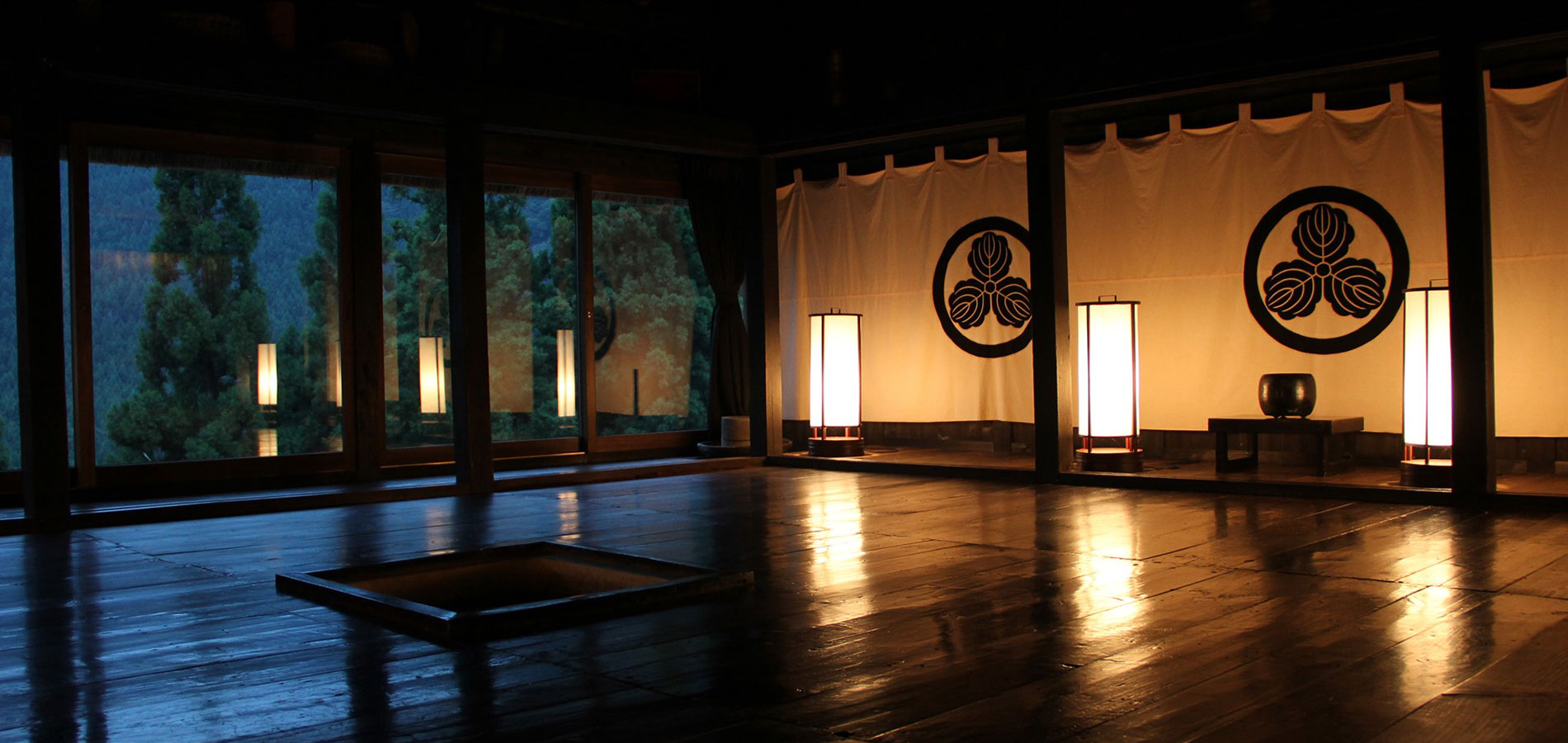篪庵は家であり、夢です。
四国の中心にある神秘的な山岳地帯、祖谷。その険しい峡谷に茅葺き民家が数多く点在していました。
それが消え去ろうとしつつある今、ひとつの夢、篪庵がはじまりました。
日本の田舎の美しさを残したい、伝統文化に根ざした環境にやさしいコミュニティーを作りたいという夢。
篪庵は古民家や風習の保存に取り組みながら、ユニークで前進的な事業をもって村の再生を目指しています。
Chiiori is a house,and a dream.
Iya, a mysterious mountainous region in the heart of Shikoku. Its steep canyons were dotted with numerous thatched houses.
Now that they are disappearing, a dream, Chiiori has begun.
The dream is to preserve the beauty of the Japanese countryside and to create an environmentally friendly community rooted in traditional culture.
Chiiori aims to revitalize the village with unique and progressive projects, while working to preserve the old houses and customs.
篪庵に出会う
アレックス・カーは1971年に初めて祖谷を訪れました。そこは四国徳島の秘境の地。深い谷が長いあいだ外の世界を遠ざけていました。1185年、屋島の戦いに敗れた平家の落人が逃げこみ、隠れ住むようになったと伝えられています。現代でも、公家言葉の名残りが聞ける土地です。
1973年、アレックスは東祖谷の釣井集落にある茅葺き屋根の古民家を購入しました。典型的な祖谷の民家です。板張りの床に二つの囲炉裏。屋内は300年近くの間、囲炉裏の煙に燻され黒く光り、中でも太い桁と梁は印象的です。
家は「横笛」と「草屋」を意味する二文字をあわせて「篪庵(ちいおり)」と名付けられました。
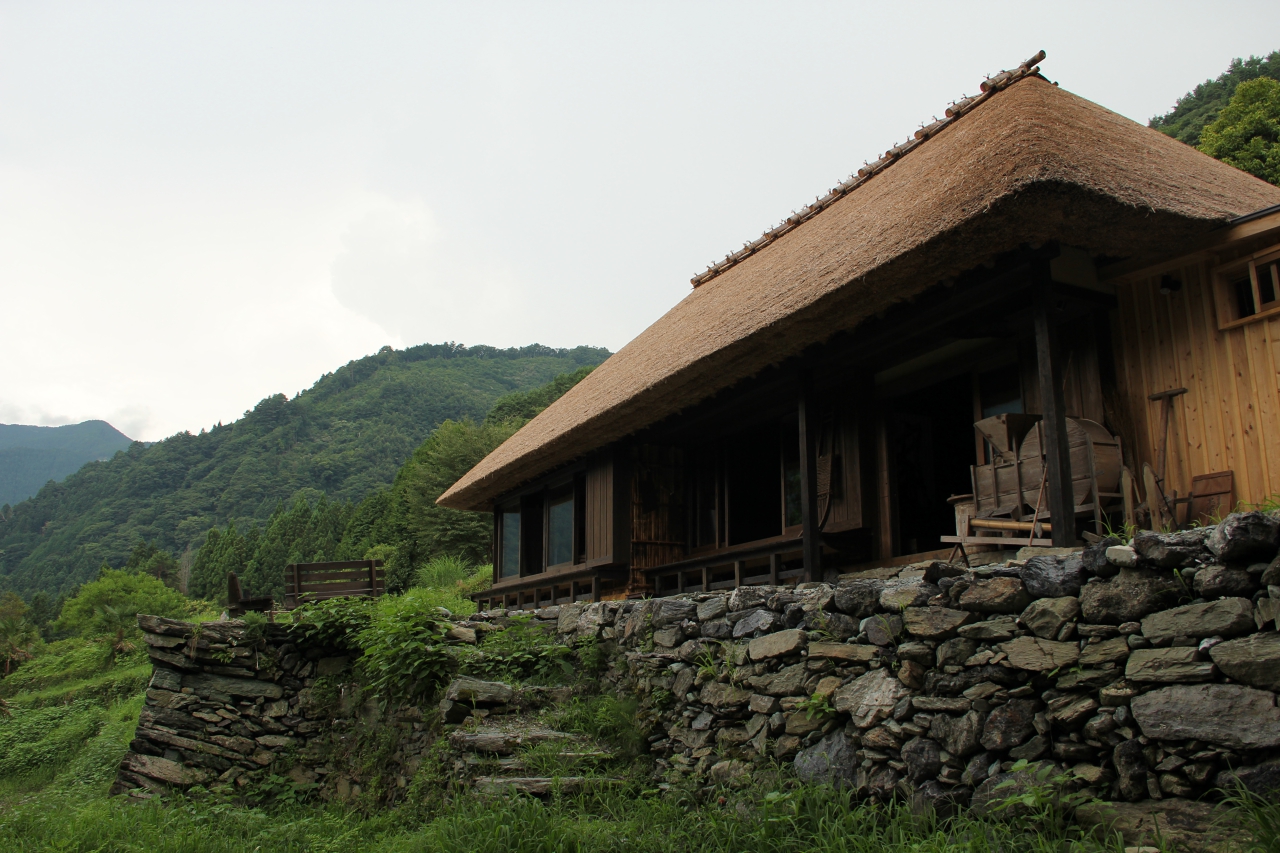
Finding Chiiori
In 1971 Alex Kerr first discovered Iya Valley, a remote region in Tokushima Prefecture on the island of Shikoku. The impassably steep Iya Gorges kept the valley so secluded that over the centuries refugees from Japan's civil wars fled into Iya and settled there, notably the Heike survivors from the Genji/Heike wars of the 12th century. Even now Iya people speak a dialect with traces of ancient Heian court language.
In 1973 Alex bought an old thatched farmhouse in the hamlet of Tsurui, in East Iya. Dating from around 1720, the house is typical of old Iya construction: with wooden floors, irori 囲炉裏 (floor hearths), and massive beams and rafters - all smoked black from centuries of fires burning in the floor hearths.
The house took the name Chiiori 篪庵, which means "House of the Flute."
家の造り
篪庵は釣井で現存するもっとも古い民家の一つです。
元禄時代(1699-1720)のものと考えられます。同じ釣井にある木村家も同時期に建てられた家で、今では重要文化財に指定されています。二つの家は造りがとても似ていて、大きさはともに8間×4間ほど。二、三軒の屋敷を除いて、祖谷ではこの大きさが最大です。
間取りは大きな座敷、居間、小さな寝間が二つと台所があります。昔、座敷は宴会や特別な来客以外にはあまり使われず、家族は居間の囲炉裏を囲んで過ごしていました。
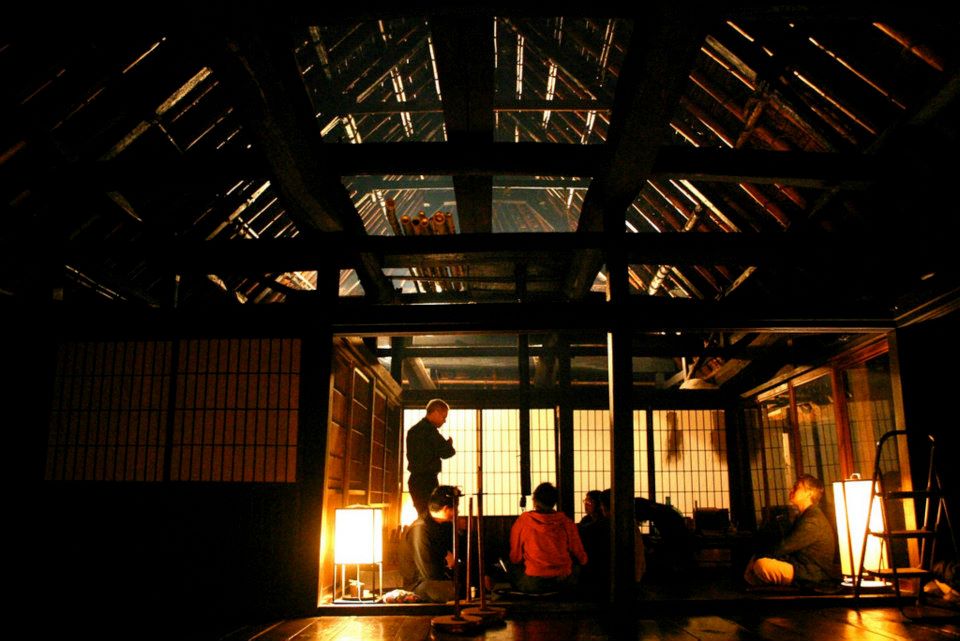
Structure of the House
Chiiori is one of the oldest extant houses in Tsurui, and it can be dated to roughly the Genroku Period (1699-1720), the same time that the Kimura House down the hill (a designated Important Cultural Property) was built. The houses are very similar. In size they measure 8 bays by 4 bays (a bay, or ken 間, is the space between two pillars, the length of one tatami). With just a few exceptions, this is about as big as houses get in Iya.
Inside is one large zashiki (reception room, grand, but traditionally rarely used except for parties and special guests), a central living room, where the family gathered around the floor-hearth, two small sleeping rooms, and the kitchen.
アレックスと篪庵
Alex-kerr and Chiiori
篪庵を購入する
アレックスが初めて祖谷に入ったのは1971年の夏です。その時すでに多くの家屋は放置されていました。1972年秋、アレックスは祖谷の集落、近隣の高知県の山、剣山の東側を散策しはじめました。数百軒の民家を訪れた後、彼は釣井集落にある一件の空家を見つけ、1973年6月に購入しました。そのときすでに空き家になって17年。元々、喜多という家族(現在は篪庵のすぐ下方に住む)の家でしたが、空き家になるまでに、何度か他の家族が住んだ時期もありました。
Purchasing Chiiori
When Alex first entered Iya in the summer of 1971, many houses were already abandoned. In the fall of 1972 Alex began looking throughout the villages of East and West Iya and also villages in neighboring mountain ranges in Kochi and on the eastern side of Mt Tsurugi. After exploring over a hundred houses, Alex settled on Chiiori, in the hamlet of Tsurui.
In June 1973, Alex bought the house. At the time it had been abandoned for seventeen years. Originally it belonged to the Kita 喜多 family (who live today just below Chiiori) for many generations, before changing hands several times before Alex found it.
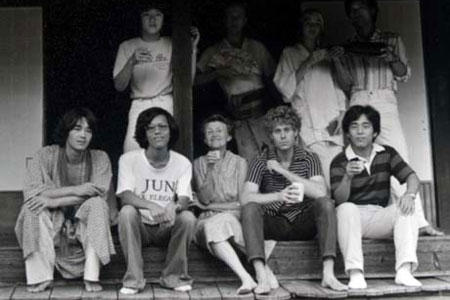
近所の人達
アレックスが越してくると、近所の人たちはすぐに様子を見に来てくれました。ある朝起きると、誰かが持ってきてくれたキュウリが縁側にあったとか。すぐ隣の尾茂さんは、祖谷の古い習慣を教えてくれました。今も私たちを支えてくれる素晴らしい友人です。
Neighbors
Right from the beginning the neighbors came over to help. Sometimes Alex would wake up to find that someone had brought cucumbers and left them on the verandah. In particular, the closest neighbor, Omo 尾茂 taught Alex much old Iya lore, and remains to this day a great friend and supporter.
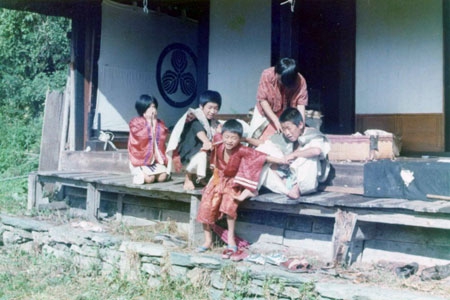
家に名前をつける
初めの頃からよく訪れていた詩人の南 相吉とアレックス、村の子供たち(当時はたくさんの子供たちがいました)は、ある晩集まって家の名前を考えました。そして辞書をみて、小さな竹の横笛を意味する古い漢字「篪」を見つけ、草葺き屋根の家を意味する「庵」を繋げました。「笛の家」、篪庵の誕生です。
相吉が 古い曲に歌詞を付けて「篪庵の歌」をつくると、当時の村の子供たちはよくその歌をうたいました。1988年の屋根の総葺き替え、現在理事長を務める「篪庵トラスト」の設立など、アレックスは篪庵という家と共に活動を続けてきました。
Naming the House
Early guests from outside Iya included poet Minami Shokichi 南 相吉, and one night Shokichi, Alex, and the village children (there were many in those days) got together and came up with a name for the house. The name they decided on was Chiiori ?庵, made up of Chi ? an archaic little-used character they found in the dictionary for “Flute”, and Iori 庵, meaning “Thatched Cottage”. Hence Chiiori, meaning “House of the Flute.” Shokichi wrote a poem about it to music from an old Quaker song, and the children used to sing it.
Since those early days, Alex has continued to be involved with Chiiori, including its complete re-thatching in 1988, and the founding of Chiiori Trust, of which he is the Director.

執筆
アレックスは著書『美しき日本の残像』(1993)の中で、篪庵との出会いを書いています。
2002年には『犬と鬼』を出版しました。日本の田舎が過疎化により崩壊する様子、古い街角から歴史的遺産が失われていく様子、数十年にわたる公共土木事業によって破壊されていく景観の様子が描かれています。そして、持続可能な観光の可能性、ありのままの自然と有機農業の価値を訴えてきました。
Writings
Alex wrote a memoir of his finding of Chiiori in the first two chapters of his book Utsukushiki Nihon no Zanzo 『美しき日本の残像』("Last Glimpse of Beautiful Japan") published in Japanese in 1993, and in English in 1996 as Lost Japan.
In 2001, Alex published Dogs and Demons (Japanese edition 『犬と鬼』2002), which describes the collapse of Japan's rural areas due to depopulation, the loss of historic heritage in old cities, and the mechanism whereby Japan's countryside was damaged by a decades-long (and still on-going) massive public construction regime. Alex has called for the revival of rural areas through sustainable tourism and rediscovery of the value of the natural environment and organic agriculture.
アレックス・カー著書
- 『美しき日本の残像』1993年、朝日文庫
- 『犬と鬼』2002年、講談社学術文庫
Alex Kerr's book
- Utsukushiki Nihon no Zanzo ("Last Glimpse of Beautiful Japan") published in Japanese in 1993, and in English in 1996 .
- Dogs and Demons published in Japanese in 2002 .

